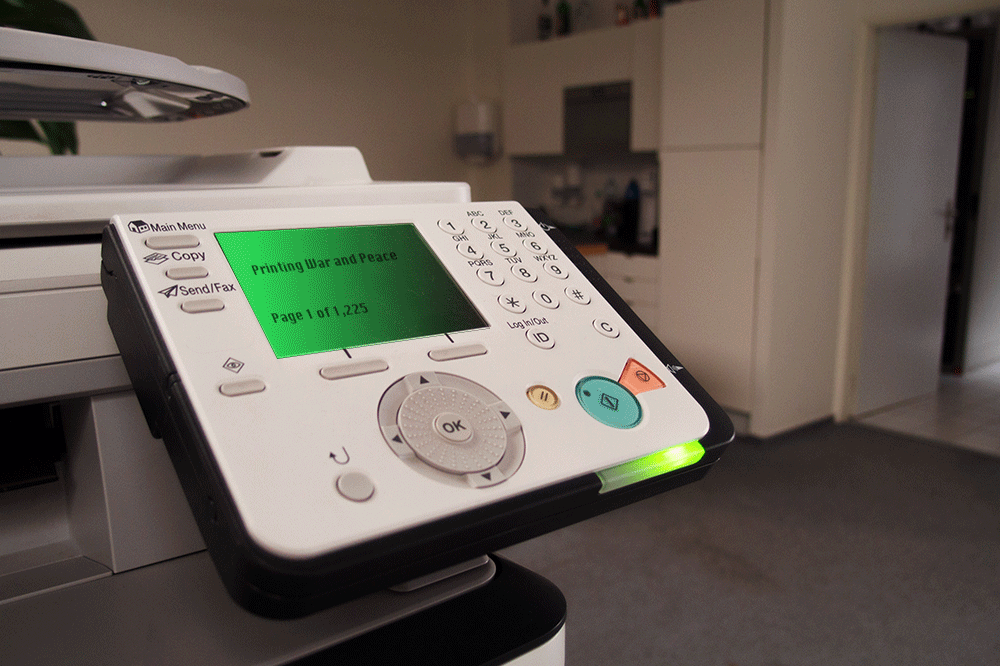President Donald Trump's tariff policy has thrown the global economy into crisis,Watch Watery Boarding House Online with the stated goal of bringing manufacturing back to the United States. In addition to global tariffs of 10 percent, the president has imposed a seemingly ever-increasing reciprocal tariff on imported Chinese goods (the White House's latest figure is 245 percent). Considering how many iPhones are made in China, this could mean a sharp price increase for Apple's most important product.
Could Apple alleviate tariff pressure by moving production back home? White House Press Secretary Karoline Leavitt recently told the press that President Trump believes it is possible.
"He believes we have the labor, we have the workforce, we have the resources to do it," she said.
But is it really feasible to manufacture an iPhone in the United States? And if Apple were to completely manufacture and assemble the iPhone in the U.S., how much would it cost?
The short answer? The mythical made-in-America iPhone would cost about$3,000, but it would cost Apple billions more. Let's break it down.
The answer isn't as simple as the White House would have you believe. To even begin answering it, we first have to face the fact that we don't know how much it costs to manufacture an iPhone right now. Apple has never shared the exact figure, and probably never will. Even if we knew the exact cost of every single part that goes into an iPhone, as well as all the other production costs that go into manufacturing an incredibly complex device like that, there are still other associated costs, including research and development and marketing.
But we have to start somewhere, so let's take last year's figures by investment bank TD Cowen (via AppleInsider), which estimated the total "bill of materials" cost of making an iPhone 16 Pro Max at $485.
The figure is a simplification and (possibly) an amalgamation, because Apple doesn't produce its iPhones in just one place. Counterpoint Research estimates that roughly 80% of iPhones are produced in China, with the rest being manufactured in India. The sum of production costs probably isn't the same for each iPhone manufacturing plant, and this discrepancy is likely to drastically increase given that the current tariff on Indian imports is 10%.
 Apple CEO Tim Cook holds an iPhone 15 during an Apple event in Cupertino, California Credit: Justin Sullivan / Getty Image
Apple CEO Tim Cook holds an iPhone 15 during an Apple event in Cupertino, California Credit: Justin Sullivan / Getty Image Even if Apple were to start manufacturing iPhones in the U.S., the process would likely be gradual. The company recently announced a $500 billion investment in the U.S. over the next four years, including a new factory in Houston, Texas, which will create "thousands" of jobs. But that factory will open in 2026, and in it, Apple will manufacture servers, not iPhones.
For comparison, Taiwan-based Foxconn — Apple's chief manufacturing partner for the iPhone — reportedly hired more than 50,000 new workers ahead of iPhone 16 production. The company employs nearly one million full-time and part-time employees globally.
So, no matter how much the final product costs consumers, bringing iPhone manufacturing to the U.S. would cost Apple billions, and possibly tens of billions, more.
All signs point to no — or, at least, not anytime soon. In 2017, Apple CEO Tim Cook laid it out very clearly: "The popular conception is that companies go to China because of low labor cost...but the truth is China stopped being a low labor cost country many years ago. That is not the reason to come to China...The reason is because of the skill and the quantity of skill in one location, and the type of skill it is."
If you don't believe Cook, or his predecessor, Apple co-founder Steve Jobs, who shared a similar opinion in 2012, you can take a look at one of the rare, real-world examples we have. In 2019 (during Trump's first presidency), Apple committed to producing the Mac Pro in Texas. The sales volume of the Mac Pro is orders of magnitude lower than that of the iPhone, but Apple still ran into problems, such as being unable to produce enough of a specific kind of screw for the Mac.
 Employees work at a Foxconn factory in Zhengzhou City, China. Credit: VCG / Getty Images
Employees work at a Foxconn factory in Zhengzhou City, China. Credit: VCG / Getty Images We also asked Willy Shih, Professor of Management Practice at Harvard Business School, if it would be possible, and his answer was a very cautious maybe. Some day, it will be possible to build the iPhone in the U.S., he told Mashable in an email interview. "But only when we get to much higher level of heterogeneous integration in the electronics, so phone assembly is easier to heavily or fully automate." He added, "we would still have to import a lot of high-value components."
In short, moving the entirety of iPhone production to the U.S. is something that would require many years, immense costs, and is unlikely to be cost-effective.
Let's imagine that Apple truly committed to the goal of manufacturing the iPhone entirely in the U.S., and that the company pulled off this feat in the near future. How much would the iPhone cost if it was made in the U.S.?
One figure we've seen comes from Wedbush Securities' head of technology research Dan Ives, who says that a modern iPhone manufactured in the U.S. would cost around $3,500 (he didn't mention a specific model).
Shih agrees on this ballpark figure. By comparing the costs of assembly labor for a smartphone in the U.S. and China, and taking into account the differences between logistic costs, duties on components, and manufacturing yields, a guestimate is possible. He guesses that you'd end up with a U.S. retail price of "somewhere between $2,500-$3,000," but he stressed how many complex manufacturing obstacles Apple would need to overcome first.
 The most expensive iPhone right now, an iPhone 16 Pro Max with 1TB of storage space, costs $1,599. Credit: Apple
The most expensive iPhone right now, an iPhone 16 Pro Max with 1TB of storage space, costs $1,599. Credit: Apple Another figure, coming from Luke Capital investor Glenn Luk, who tackled the question in 2018, will make your eyes water. Luk claimed that the home-made iPhone would cost somewhere in the $30,000 to $100,000 range. Yup, that's six figures for an iPhone.
"In fact, if Apple were forced to solely manufacture the iPhone in America, there is a good argument that it would not be able to manufacture any at all. And if they could somehow successfully make the manufacturing transition, capacity would likely be constrained to just a few million units a year, said Luk.
The massive discrepancy between these figures indicates that the question is incredibly difficult to answer. Undoubtedly, making the iPhone at home would be a lot pricier. Given the higher costs, and given how fluid the tariffs are, why would Apple commit to such a big manufacturing investment?
And let's not forget about the massive volume Apple is working with — the company shipped an estimated 225.9 million iPhonesin 2024. Building some iPhones in the U.S. is one thing, but producing sufficient volume to satisfy demand is a different story. "The key issues are obviously labor cost, whether you can recruit sufficient labor for the volumes they need, and of course the supply of components, many of which have never been made in the U.S.," said Shih.
Given that President Trump has already walked back some of his tariffs, the answer is obvious: Apple will likely continue producing the iPhone overseas. The retail price of the smartphone will possibly go up a little, depending on where the tariff negotiations end up.
The company may also shift production to other countries, such as India (Foxconn has already moved some of its production capacity there, and is looking to expand further).
Finally, Apple may, over time, bring some of its production to the U.S. — though almost certainly focusing on devices that aren't produced at the iPhone scale.
The good news? That $3,000 iPhone isn't something you should fear, at least not right now.
Keep checking Mashable for our latest tariff news and explainers, from delayed Nintendo Switch 2 pre-orders to reports of iPhone 16 panic buying.
Topics Apple iPhone Money Tariffs
 Contingent No More
Contingent No More
 Staff Picks: Museum Heists, Midsixties Teens, and Munchesque Prisoners by The Paris Review
Staff Picks: Museum Heists, Midsixties Teens, and Munchesque Prisoners by The Paris Review
 Always a Tough Guy at Heart by Tadao Tsuge
Always a Tough Guy at Heart by Tadao Tsuge
 There Are No White People in Heaven: An Interview w ith José Olivarez
There Are No White People in Heaven: An Interview w ith José Olivarez
 The Aristocracy of Freakdom: E.E. Cummings on Coney Island by E.E. Cummings
The Aristocracy of Freakdom: E.E. Cummings on Coney Island by E.E. Cummings
 Redux: The Whims of Men by The Paris Review
Redux: The Whims of Men by The Paris Review
 The Prevalence of Ritual: On Romare Bearden’s ‘Projections’
The Prevalence of Ritual: On Romare Bearden’s ‘Projections’
 Redux: Doing Battle with Your Successors
Redux: Doing Battle with Your Successors
 SpaceX's Starlink satellite launch in pictures
SpaceX's Starlink satellite launch in pictures
 An Incomplete Biography of Marcel Proust by Liana Finck
An Incomplete Biography of Marcel Proust by Liana Finck
 Because the Story Was Mine
Because the Story Was Mine
 Where Do We Go When We Read?
Where Do We Go When We Read?
 Contingent No More
Contingent No More
 Satirizing Identity Politics: An Interview with Lexi Freiman
Satirizing Identity Politics: An Interview with Lexi Freiman
 Ugliness Is Underrated: Ugly Design by Katy Kelleher
Ugliness Is Underrated: Ugly Design by Katy Kelleher
 Cixin Liu, China, and the Future of Science Fiction
Cixin Liu, China, and the Future of Science Fiction
 Best robot vacuum deal: Save $140 on roborock Q7 Max Robot Vacuum
Best robot vacuum deal: Save $140 on roborock Q7 Max Robot Vacuum
 In Praise of the Photocopy by Alejandro Zambra
In Praise of the Photocopy by Alejandro Zambra
What is purity culture and how does it impact sex?Robert Frost, the Karate Kid, born on this day in 1874.The Morning News Roundup for March 27, 2014Read Frederick Seidel’s Poem “Dayley Island”David Mamet on His Closest Friend, Shel SilversteinMicromégas by Sadie SteinTranslating Pushkin Hills: An Interview with Katherine Dovlatov by Valerie Stivers“The grandfather of origami” Akira Yoshizawa, born on this day in 1911Robert Frost, the Karate Kid, born on this day in 1874.Remembering Sherwin B. Nuland, the author of How We DieGoogle updates policies on personal explicit images in search resultsBull City Redux by Nicole RudickSnap's new Spectacles let you view the world in AR through the lensesThe Dyson Supersonic just got a new attachment for flyawaysThe top masturbation question people had during the pandemicSee the First Footage from the Cinematograph, Circa 1895Read Frederick Seidel’s Poem “Flame”Twitch's new content tags are long overdue but they'll need backThe best movies on Shudder that you can't stream anywhere elseWhat We’re Loving: The Backwoods Bull, the Ballet, the Boot by The Paris Review 6 best note Alcaraz Paris 2024 livestream: Watch live tennis for free Simone Biles, LeBron James shade Donald Trump after her gold medal win Play it loud: the 25 best music documentaries on Netflix iPhone 16 Pro may come in Titanium Bronze Wordle today: The answer and hints for August 4 'House of the Dragon' Season 2 finale: Oh crap, Ser Simon Strong finally called Mum Intel will lay off at least 15,000 employees NYT's The Mini crossword answers for August 1 Bumble, Hinge, and other apps had to fix privacy risk, study says 4 apps all students should have on their iPhones Best free online courses from Harvard University Twitter for Mac seems to be dead for good Looks like GameStop just shut down 'Game Informer' magazine and took down its website Best wireless charger deal: Get the Samsung 15W Wireless Charger for just $36.46 at Amazon Best portable SSD deal: Take $60 off the 1TB Samsung T7 portable SSD Best kitchen deal: Save 50% on the Vitamix Ascent A2500 blender today only at Best Buy Simone Biles Paris 2024 livestream: Watch live gymnastics for free Scottie Scheffler Paris 2024 livestream: Watch live golf for free Men's 200m final Paris 2024 livestream: Watch live athletics for free
2.3455s , 10157.625 kb
Copyright © 2025 Powered by 【Watch Watery Boarding House Online】,Pursuit Information Network